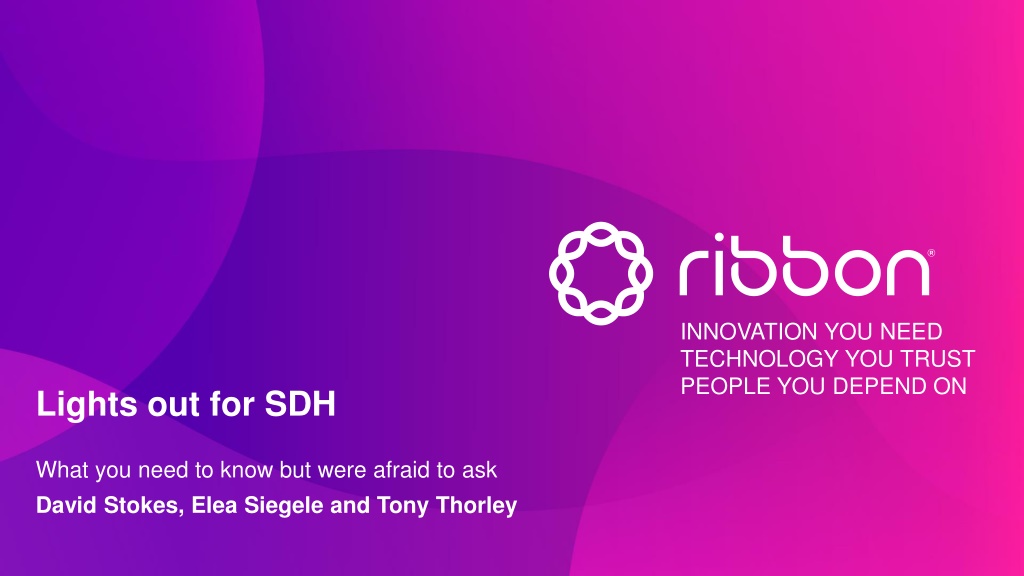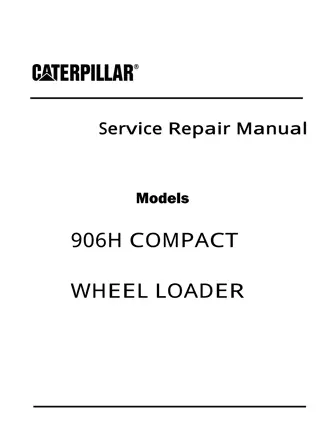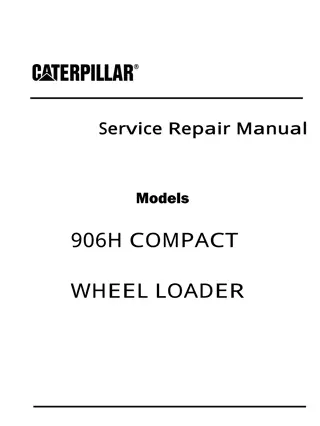The Evolution and Importance of SDH Technology
Explore the journey of Synchronous Digital Hierarchy (SDH) technology from its inception to modern advancements. Uncover key learnings, user preferences, potential challenges, and technological approaches to ensure SDH performance. Discover how SDH continues to play a vital role in telecom networks despite the emergence of new technologies.
Download Presentation

Please find below an Image/Link to download the presentation.
The content on the website is provided AS IS for your information and personal use only. It may not be sold, licensed, or shared on other websites without obtaining consent from the author.If you encounter any issues during the download, it is possible that the publisher has removed the file from their server.
You are allowed to download the files provided on this website for personal or commercial use, subject to the condition that they are used lawfully. All files are the property of their respective owners.
The content on the website is provided AS IS for your information and personal use only. It may not be sold, licensed, or shared on other websites without obtaining consent from the author.
E N D
Presentation Transcript
INNOVATION YOU NEED TECHNOLOGY YOU TRUST PEOPLE YOU DEPEND ON Lights out for SDH What you need to know but were afraid to ask David Stokes, Elea Siegele and Tony Thorley 1 Ribbon Communications Confidential and Proprietary
A Brief History of Time SDH Pre SDH telecom transport Little service visibility No integrated resilience Non-standard; multiplexing / interfaces speeds No interworking between different systems What SDH (1990ish) did for us Comprehensive service monitoring Service protection and network resilience Managed and resilient timing distribution Interworking Next generation SDH (2006ish) GFP, VCAT, LCAS: mapping of data into adjustable variable sized containers 3 Ribbon Communications Confidential and Proprietary
What SDH Users Want? Hard service separation Hard performance guarantees, accurate timing and excellent OAM Easy to design, deploy and manage E1s and T1s are still widely used for voice services and Sub E1/T1 services continue to be used in large quantities by operators of power, rail, pipeline etc. networks SDH is well understood by generations of network planners, designers, users and customers who are reluctant to change 4 Ribbon Communications Confidential and Proprietary
What Could Possibly Go Wrong? Do you know what is out there? Where it is? How it is connected? What services are live? What services are live and being used? What services are being paid for (live and not live)? SDH carries internal services such as timing, network management for other networks, EoW, site alarms..... all will need to be migrated or gradually replaced. Migration can be complex Change triggers customers to shop around 5 Ribbon Communications Confidential and Proprietary
Technology approaches to achieving SDH performance Elea
SDH Support in IP Networks The solution is already out there, in networks and proven RFC 4553 (2006) Structure-Agnostic TDM over Packet (SAToP) Pseudowire encapsulation for E1 and E3 bitstreams. RFC 5086 (2007) Structure-Aware TDM Circuit Emulation Service over Packet Switched Net-work (CESoPSN) Pseudowire encapsulation of lower bit-rate nxDS-0 streams RFC 4842 (2007) SDH Circuit Emulation over Packet (CEP) Pseudowire encapsulation for SDH STM streams Additionally Timing distribution Adaptive / SyncE / IEEE 1588v2 Network protection schemes in IP Networks - sub 50ms HW Protection schemes 7 Ribbon Communications Confidential and Proprietary
The Next Level - Smart CES SFP Install it in any Neptune IP Platform Suitable for Low port fan-out use case E1/E3/STM-1/4/16 Option for Power and Space Constrained STM-1/4 E3 E1 Interop with Neptune CES Card End to end Management STM-16 8 Ribbon Communications Confidential and Proprietary
The World Has Moved to IP and IP Has Evolved YOU CAN TRUST THE IP NETWORK IP networks can deliver services with low latency, low packet loss and predictable jitter. QoS designs that will prevent congestions Bi-directional paths New Traffic Engineering Techniques Multi-Layer Automated Intelligent Intelligent control and automation SLA-aware OAM, Performance Monitoring and Telemetry Network architecture redundancy/protection Control of misbehaving traffic using analytics Programmable Network Infrastructure Traffic Aware Resource Aware (Network Slicing) Scalable and simplified New forwarding techniques MPLS / SR Intent based Multi-layer 9 Ribbon Communications Confidential and Proprietary
TDM to IP Use Case T1 operator E1 SDH Ring Replacing EoL Network and technology - SDH E1 CES overlay SRv6 GE Neptune and Smart SFP solution GE E1 SRv6 Network E1 Maintaining the Jitter and Latency from the SDH Platform 10G GE Jitter Compensation at the Neptune platform Voice Switch Remote Terminal 10 Ribbon Communications Confidential and Proprietary
Added Advantages of a New Transport Platform Tony / Elea
The Incredible Shrinking Element There are strong space, power and age arguments for replacing old SDH STM-16 ADM from 2000 Full 300mm rack Consumes 400W Switches 5Gb/s IP has all of the network capabilities required to replace SDH whilst continuing to meet the needs of users: Resilience and from 2015 Latency guarantees 1U and 100W Switches 300Gb/s Excellent OAM&P (operations, administration, maintenance and Performance) More accurate timing CES STM-1 and E1 card CES STM-4 and E1 SFPs 12 Ribbon Communications Confidential and Proprietary
Support For New Services In One Platform Unified 4G/ 5G Mobile xHaul Broadband Backhaul Multi-Access Edge IP wholesale services Business services: MEF services, L2 VPNs and L3 VPNs Business and Mission Critical networking SDH to IP Migration 13 Ribbon Communications Confidential and Proprietary
Why Operators Are Still Buying SDH Why Could This Create A Longer-term Problem For Them Tony
Why are some operators still buying new SDH? To patch or extend an existing network; SDH/SONET Equipment Spending 9 To interconnect with other SDH networks; 8 7 US $ (Billion) Because their customers insist on SDH; 6 Because they understand and trust SDH 5 4 BUT 3 2 1 0 Availability of SDH is coming to an end; and 2003 2004 2005 2006 2006 2008 2009 2010 2011 2012 2013 2014 2015 2016 2017 2018 Shouldn t new investment be in a technology with a future? Source: IHS Markit Enterprise Edge Connectivity Strategies, NA Enterprise Survey, 2019 15 Ribbon Communications Confidential and Proprietary
What Are the Migration Options Elea and Tony
Migration Options Migration Reality In most cases, power and space savings are insufficient to overcome the costs and issues: Engineering resource is needed to plan and implement service changes Customer service resource is needed to inform customers of service outages New services are likely to be significantly lower margin than legacy Customers faced with change can move provider or cease the service Convert the TDM services/devices to IP New IP capable equipment; or Upgrade existing equipment to IP capable interfaces; or Emulate TDM services on an IP capable network Carry TDM services over a G.709 OTN . but keeping SDH running increases risk of failure 17 Ribbon Communications Confidential and Proprietary
Is Mass Migration the Only Option..? Migration costs are high, so don t add new services to old SDH networks and don t build more SDH Build new IP networks with Circuit Emulation capabilities or add Circuit Emulation to your existing IP networks Leverage proven packet switched network technologies like label switching to deliver SDH services together with IP services. Migrate sensitive and critical legacy services from SDH to IP irrespective of the cost! As SDH ages, the likelihood of an unrecoverable failure grows Apart from the serious risk to life and critical services, not acting now to secure sensitive and critical services risks: reputational damage; fines; litigation; and regulatory penalties. 18 Ribbon Communications Confidential and Proprietary
SDH-to-IP Migration Benefits Reduce the risks and costs of having a legacy network. Future proofing your network as services move to all-IP Automation and Orchestration Multi-service Platform Higher Capacity New traffic engineering schemes Network support for new services Optimised use of Network Resources Hard QoS for predictable performance coupled with statistical multiplexing of Best Effort services. 19 Ribbon Communications Confidential and Proprietary
Summary David, Elea and Tony
Summary Stop investing in SDH, withdraw from using SDH: SDH is EoL and EoM Skilled people running SDH are retiring There are significant risks in using out of date technology Ribbon has the expertise and capabilities to support transformation: SDH to IP, OTN and WDM Ribbon has field proven processes for: Critical Infrastructures Service Providers Now is the time to tackle legacy SDH move to IP and migrate sensitive and critical services as a priority 21 Ribbon Communications Confidential and Proprietary







 undefined
undefined






















